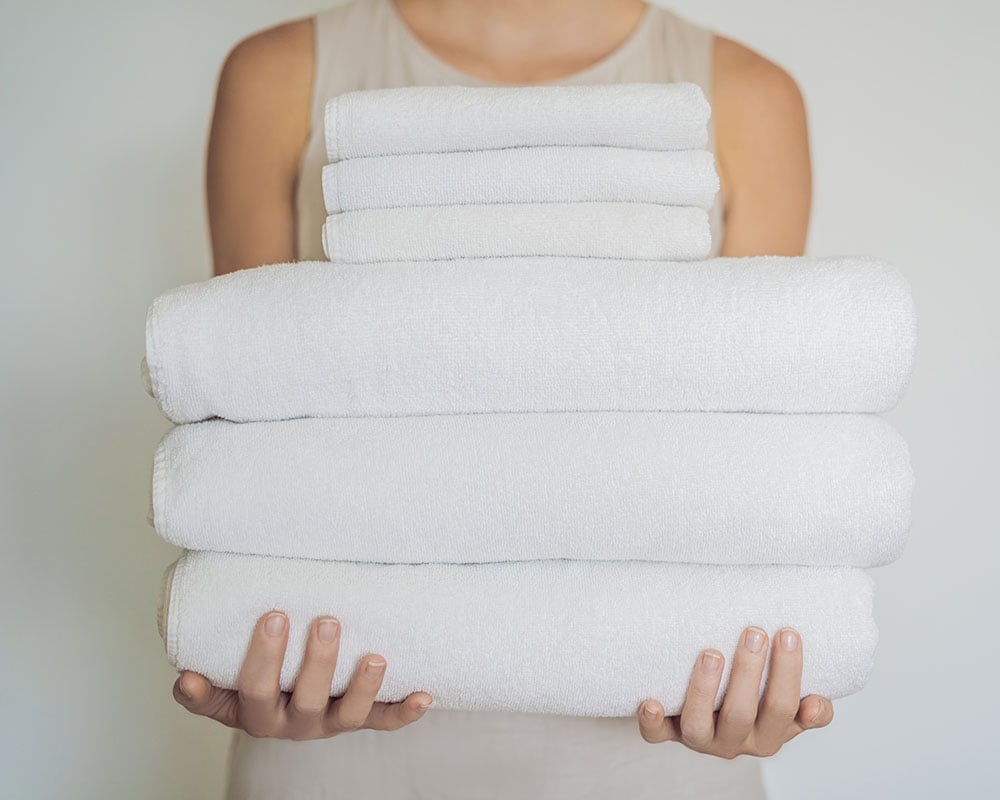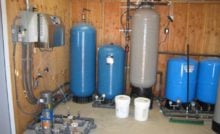Podcast Q & A 3: “We recently had a water softener installed, now we’re having a problem with blue stains. The company that installed the softener tested our water and it is not acid.


Podcast: Play in new window | Download
Subscribe: RSS
Welcome to the Cleanwater Made Easy Podcast Q and A.
This is Q and A episode 3.
Hi my name is Gerry Bulfin. I’m a WQA -Certified Master Water Specialist and water contractor here in Santa Cruz California, Northern California. Each week on our main podcast I go deeper into various well water treatment systems and problems. But I’m trying to do more of these quick Q&A episodes. We get so many questions every day and people email us, they call us, and they chat with us through our website. So there’s always great questions.
This week John contacted us and he asked, “We recently had a water softener installed, now we’re having a problem with blue stains. The company that installed the softener tested our water and it is not acid. They said it’s not their fault and they cannot help. Have you ever heard of this happening?”
Well John, actually yes, we have quite a few times. Let me talk about where the blue stains come from, you probably already know this but blue staining inside, like you see blue stains on your fixtures or on the bathtub or in the laundry, that’s a result of copper corrosion. So your house, no doubt has copper pipes. If you see blue stains, something is corroding the copper pipe. Most of our customers that have problems with blue stains is because they have acidic well water.
So that’s a good reason to check the water, make sure it’s not acidic. If the water is acidic, usually we find the corrosive water that is acidic is not that hard and therefore it’s aggressive water and you have a problem with this copper corrosion and you get blue stains. The answer is to fix the acidity by using our calcite neutralizer which is fresh marble or calcium carbonate.
But, you got a water softener because your water is hard, it already has a lot of calcium carbonate, they checked it and it’s not acidic. So how can it be happening then? Well, it’s hard to say for sure, but the most common cause is a plumbing problem. Essentially what happens is when the plumbing gets installed and the copper pipes get installed, they don’t deburr the ends of the copper pipe correctly.
They leave little jagged sections in there where the pipe hasn’t been properly deburred and prepared before they solder it, before they swept the pipe together. Or sometimes they can use too much acid flux, which is not that common anymore but can happen. Some plumbers like the acid flex but they use too much of it or they don’t deburr the ends, and then you get this little corrosion sites occurring inside the copper pipe. It can be a big problem, and really there is nothing you can really do, except replace the copper pipe.
Unfortunately you have to trace it back to that section of the copper pipe that was done around the water softener. Then you’d have to remove the copper pipe, inspect it and maybe have a different plumber put it in or have them come back and examine it and redo the piping so it’s properly deburred and there’s not too much flex.
The other way to do it is, if it’s a very short section of copper pipe that was installed, see if you can eliminate the copper pipe and just use stainless steel flex lines. But this can be a serious problem and I know here in the Bay area, we're about an hour south of San Francisco, there’s been a problem with excess copper levels floating into the Bay and a lot of it is from improper plumbing practices because the water is naturally corrosive. So there’s been different alerts and recommendations to be careful when you’re doing the piping to avoid this issue of copper.
Another myth that a lot of times folks think it is the softeners. They think they take out the calcium carbonate and take out the hardness so now the softener makes the water aggressive or corrosive. In fact, that’s not true. What happens is, if you have hard water and you have a neutral pH, meaning it’s not acidic, softening the water is not going to make the water aggressive or corrosive. That’s my experience of what we know.
So anyway I hope that’s helpful. It’s kind of bad news but I don’t want to get in the middle of it with your contractor plumber, but that’s what I will suggest. You can tell him that it wasn’t there before they did the softener, now they’ve done it, you got the blue stains, yeah it’s a problem. It’s most likely the piping and the way it was done. In very rare circumstances it could be inferior piping but I haven’t run into that myself, I’ve heard of it but there’s other problems with the jagged ends, not deburring, and not preparing the copper pipe properly and/or using too much flex that can cause the problem.
Okay well if you have a question please contact us through our website cleanwaterstore.com there’s a little chat box on there, you can ask a question or you can just do it the old fashion way, give us a call. We’re happy to talk to you about any kind of water issue or problem or question you might have and thanks again for listening.
For further reading Water Softener Installation
Recent Posts
U.S. Water Problems by Region: Common Contaminants & Solutions
Curious about U.S. water problems by region? Water quality isn’t just a national issue—it’s a…
Wildfire Water Contamination: How to Ensure Safe Water After a Fire
Wildfire Water Contamination: What You Need to Know After the Fires Wildfire water contamination poses…
Clean Water For Pickles: The Secret Ingredient
Using clean water for pickles is not just a best practice—it’s crucial for achieving great…
How to Test and Remove Manganese in Well Water: A Complete Guide
If you rely on a well for your home’s water supply, you might have encountered…
Effects of Chlorine and Hard Water on Skin: Top Skin Problems and Solutions
Effects of Chlorine and Hard Water on Skin: Top Skin Problems and Solutions Have you…
How Whole House Water Filters Keep Your Family Safe: A Mom’s Guide
When creating a safe and healthy environment at home, clean water is essential—especially for moms…
